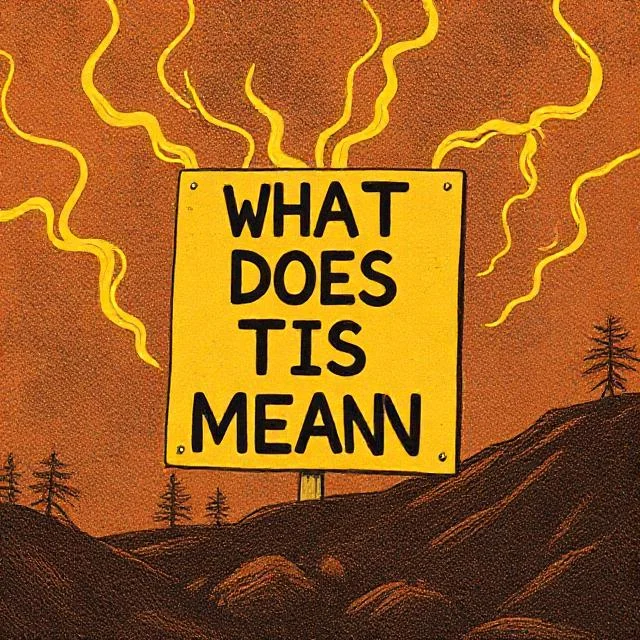In today’s fast-paced communication landscape, phrases like “what does this mean” have become increasingly common.
Whether in text messages, social media posts, emails, or casual conversations, people frequently seek clarification when confronted with unfamiliar terms, symbols, or behaviors.
Understanding this phrase is essential because it not only helps in decoding messages but also enhances communication skills, prevents misunderstandings, and fosters more meaningful interactions.
From teenagers using slang to professionals navigating technical jargon, knowing how to interpret and respond to this question effectively is a valuable skill.
This article explores the meaning, origin, contexts, and common misconceptions of “what does this mean”, providing readers with a comprehensive understanding of its usage and relevance in daily communication.
Definitions & Meaning
The phrase “what does this mean” is a direct inquiry used to request clarification or explanation. It signals that the speaker or writer has encountered something they do not fully understand—whether a word, gesture, symbol, or situation. The core function of this phrase is seeking comprehension, making it a vital tool in effective communication.
For example:
- In texting, someone might write “I got a 404 error on the website—what does this mean?” Here, the person seeks to understand a technical issue.
- In everyday conversation, if a friend says, “I can’t make it tonight,” the listener may respond, “What does this mean? Are you busy or upset?”
This phrase also conveys curiosity and engagement, showing that the inquirer values understanding rather than making assumptions.
Origins & History
While the exact origin of “what does this mean” as a phrase is difficult to pinpoint, it has roots in the natural development of interrogative expressions in the English language. Its components—what, does, this, and mean—have existed in English for centuries. Historically, similar forms of inquiry appear in early English literature where characters sought clarity or interpretation.
Over time, the phrase evolved into its current, concise form, particularly flourishing with the rise of print and later digital communication. In the modern era, its popularity surged with the internet, where users frequently encounter unfamiliar content, from memes to technical jargon. Today, it remains a universal tool for clarification across cultures and languages.
Usage in Different Contexts
Social Media
Online, “what does this mean” often appears in comments or replies when users encounter confusing posts, abbreviations, or trends. For instance, a user might comment on a TikTok video, “This trend is going viral—what does this mean?” This reflects curiosity about cultural phenomena.
Professional Context
In workplaces, the phrase can clarify instructions, jargon, or project details. Employees may ask, “What does this mean for our deadlines?” demonstrating proactive engagement and a desire to avoid errors.
Pop Culture
The phrase frequently appears in entertainment, such as movies, TV shows, and music discussions, where audiences interpret symbolic or cryptic content. For example, fans may debate lyrics or plot twists by asking, “What does this mean for the characters?”
Common Misunderstandings & Clarifications
A common misconception is that asking “what does this mean” implies ignorance or incompetence. In reality, it is a sign of critical thinking and engagement. Misinterpretation can also arise when context is ignored. For instance, asking the phrase in a sarcastic tone can convey skepticism rather than genuine curiosity.
Another misunderstanding involves technical or cultural differences. What might be confusing in one context (e.g., internet slang) may be entirely clear in another, highlighting the importance of specifying context when seeking clarity.
Alternatives & Synonyms
Several phrases can replace “what does this mean” depending on the context:
- Can you explain this?
- What is the significance of this?
- How should I interpret this?
- Could you clarify this?
- What’s the point here?
Using these alternatives can adjust tone, making inquiries sound more formal, polite, or casual based on the audience.
Frequently Asked Questions (FAQ)
1. Is “what does this mean” only used in English?
No. Many languages have equivalent phrases to request clarification, such as “¿Qué significa esto?” in Spanish or “这是什么意思?” in Chinese.
2. Can it be used sarcastically?
Yes, tone and context matter. It can express frustration, confusion, or humor depending on delivery.
3. Is it informal?
It can be both informal and formal, depending on phrasing and context. In professional emails, “Could you clarify what this means?” is preferred.
4. How do I respond to it?
Provide a clear, concise explanation or context-specific answer. Avoid vague responses.
5. Does it have a deeper philosophical meaning?
Sometimes, yes. People may use it to question symbolic or abstract ideas, not just factual content.
6. Can it be used in writing?
Absolutely, in books, articles, and digital communication, it helps guide understanding.
7. Why is it important?
It promotes clarity, reduces miscommunication, and encourages learning and engagement.
Conclusion
The phrase “what does this mean” serves as a universal tool for seeking understanding, bridging knowledge gaps, and fostering meaningful communication.
From casual conversations to professional discussions, its usage reflects curiosity, engagement, and critical thinking.
By understanding its meaning, history, contexts, and alternatives, individuals can use it effectively to clarify, interpret, and communicate more precisely.
Whether online, in pop culture, or in workplace scenarios, knowing how and when to ask “what does this mean” can greatly enhance interactions and reduce misunderstandings.
Ultimately, this simple question remains a powerful instrument for learning, connection, and thoughtful discourse.

